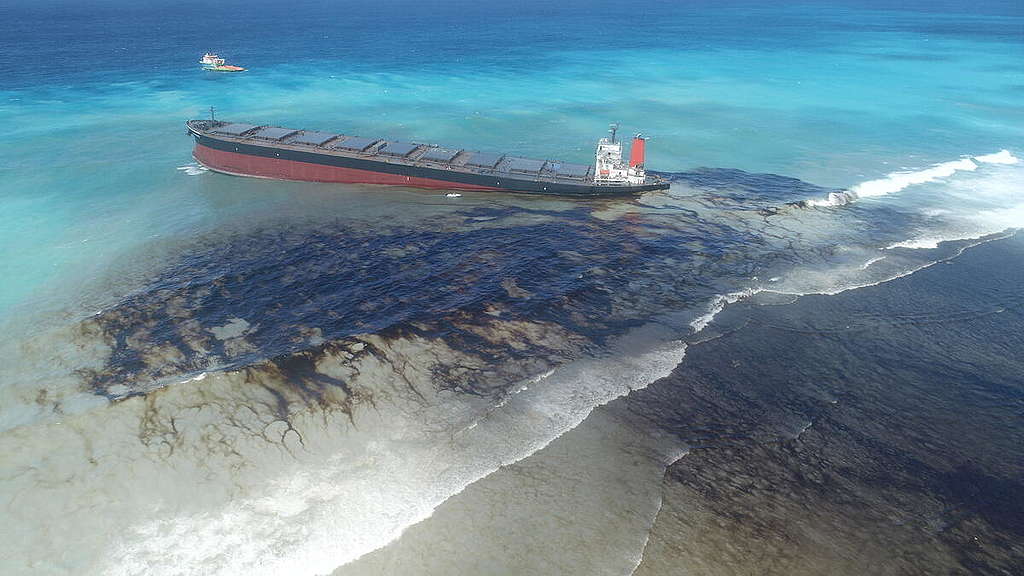Introduction
The marine environment is a critical, interconnected, and supplementary element for the survival of biodiversity, ecosystems, and life forms on the planet. For this reason, avoiding and managing the effects of oil pollution on the marine environment is crucial because the most serious threat to the marine environment is oil pollution, and oil and oil-based product spills at sea occur frequently (Simeonov & Hassanien, 2009). The presence of oil on the sea surface harms the marine ecosystem and disrupts the exchange of oxygen between the marine environment and the atmosphere (Bayırhan & Gazioğlu, 2020). From this perspective, a detailed understanding and analysis of the separation process of oil at sea and its associated operations is also essential.
Effects of Oil Pollution on the Marine Environment
An oil spill has a wide range of economic, environmental, and social impacts. Oil pollution can harm the environment and biodiversity of ocean and coastal areas and pose risks to animal and human health (Xhelilaj & Sinanaj 2010). These impacts have long-term consequences. The presence of an oil spill in the water prevents dispersion and the penetration of oxygen into the lower layers of the sea (Bovio et al., 2017). The polluting effect of oily slicks on water surfaces endangers the local marine life and vegetation (Okeke et al., 2022). In addition, oil pollutants in the waters cause pollution of marine foodstuffs, reduced tourist interest, and species extinction (Ng et al., 2022).
The most important issue is the impact of petroleum contamination on the maritime environment and ecology. The marine environment has a complex or sensitive connection with the petroleum hydrocarbon complex substance, and recovery might take several years. When oil enters the water, it generates an oil film on the sea surface that prevents the barter of carbon dioxide and other gases, impairing marine phytoplankton photosynthesis and resulting in algae and phytoplankton mortality. In other words, the deterioration of the oil pollutant depletes the oxygen dissolved in the water, disturbing the oxygen balance of the sea and causing deoxygenation, which can result in death (Bovio et al., 2017). Human consumption of such deadly fish and shellfish results in the buildup of harmful chemicals and negative effects on human health (Okeke et al., 2022). In Figure 1, these events are shown as a diagram.

Oil also may cause a variety of problems for seabirds and marine animals. The two most important ways are physical contact and toxic contamination. Some animals are vulnerable to the harmful effects of breathing or ingesting oil, and oil vapours can harm an animal’s central nervous system, liver, or lungs. For example, oil isolates the integrity of the protective feather layer and plumage, which is the first harmful consequence of oil pollution on birds. As a result, they die from frostbite (hypothermia). Furthermore, if a bird absorbs too much oil, it might clog the bird’s feathers, rendering it unable to fly (GMOPIG, 2007).

If we look at the effects of oil on marine mammals, these effects are species-dependent and cause hypertomy just like in birds. It also causes toxic effects due to the ingestion of oil. As a result, it leads to secondary organ dysfunction, for example, congested lungs. It also causes eye and skin problems caused by constant exposure to oil (GMOPIG, 2007).

These effects are better understood when looking at the consequences of major maritime accidents in history. For example, the 1989 Exxon Valdez oil spill happened when a tanker collided with a reef in Alaska, pouring thousands of tons of oil into the water. As a result of this incident, around 250,000 seabirds dead (Mapelli et al., 2017). Another example is the “Prestige” tragedy, which was the sinking of a ship in 2002, which impacted kilometers of shoreline and resulted in the loss of 66% of the region’s biological richness (Bovio et al., 2017). One of the most famous oil spills is the Deepwater Horizon (DWH) disaster, which happened in 2010 after a drilling rig explosion in the Gulf of Mexico. More than 700.000 tons of crude oil were spilled into the Gulf of Mexico as a result of this disaster. Following the accident, the richness of metazoan meiofauna and vertebrates dropped considerably. Around ten billion dollars were invested to clean up the leak (Alessandrello et al., 2017). In addition, this catastrophe damaged the fishing and tourism industries’ economic assets, which totaled more than 5.5 billion dollars, as well as over 200,000 job opportunities. Looking at the sociocultural and psychological consequences of the Exxon Valdez oil spill and its outcomes, it has been concluded that oil spills substantially impact the psychosocial environment (Li et al., 2016).

- sciencedirect.com
- https://www.bjmc.lu.lv/
- sciencedirect.com
- oils.gpa.unep.org
- sciencedirect.com
- https://www.cell.com/trends/biotechnology/home
- researchgate.net
- pubmed.gov
- link.springer.com
- cevrefelaketleri.weebly.com
- researchgate.net
